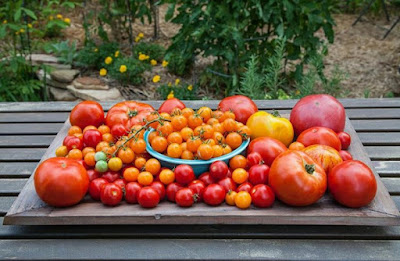MANGO GRAFTING
Introduction of mango farming: The mango is a juicy stone fruit and belongs to the family of ''Anacardiaceae'' and genus of ''Mangifera''.Mangoes are delicious and excellent flavour.
Mangos on the road side
Mango Grafting
Just grafted Mango plants
1
Create rootstock growth using the seeds of a successful mango tree. Water and fertilize the seed until growth occurs. Allow the new seedling stem to grow to a thickness of about 3/8 to 1 inch in diameter. If the seedling is green in color, without rot or disease, and it produces healthy leaves and buds, it will be useful as a rootstock. The proper age for rootstock is typically between 6 months and 1 year old.
2
Cut the rootstock off about 4 inches above the soil using a pair of very sharp pruning shears or a grafting knife. Make the cut level, and avoid any damage to the stem below the cut. Use your grafting knife to split the remaining stem in half from the top down to about 1 inch above the surface of the soil.
3
Locate a scion, or new growth shoot, on an existing mango tree. The scion should be taken from a successful tree that produces regular quality fruit and flowers. The scion should have a thickness equal to or slightly smaller than the rootstock to which it will be grafted and should have fresh buds and healthy leaves. Use your grafting knife to cut the scion from the tree, then trim back the topmost leaves.
4
Cut the open end of the 5- to 6-inch-long scion in a wedge shape. Slice away the bark along each side of the scion to create an angled point at the center. Slide the scion wedge into the slot you have cut in the rootstock so the respective cuts line up. Use your grafting tape to wrap the rootstock tightly to the scion so that all is held firmly in place.
5
Place a plastic bag over the new graft from the top down, and tie it off at the bottom. The bag protects the graft from insects and pests and provides a mini-greenhouse effect by raising the temperature and moisture levels. If the graft sits in direct sunlight, cover the plastic bag with a second paper bag for a bit of shade.
6
Remove the bags once the grafted tree has started growing, and remove the tape when the tree starts to produce new leaves. Water the grafted tree as you would a normal mango sapling.
Things You Will Need
- Fertilizer
- Sharp pruning shears
- Grafting knife
- Grafting tape
- Plastic bag
- Paper bag
- Work gloves
Tips
- There are several grafting methods that may be employed. The cleft grafting method as described above is one of the simplest and most effective.
Warnings
- Allowing dirt, chemicals or organic matter of any kind to come into contact with the open edges of the scion or the rootstock can result in disease and a failure to graft properly. Keep the area and the components clean throughout the process.
- Mango tree leaves are poisonous to humans. Do not eat or burn the leaves.
- Wear work gloves when using sharp garden tools. Serious injury otherwise may occur.
for any questions contact me.Pictures in the article clicked by me


Lovely keep up
ReplyDelete